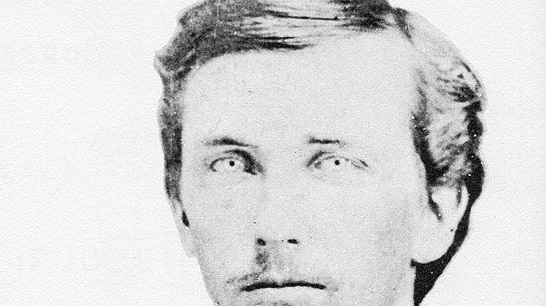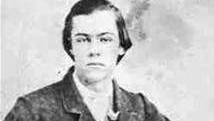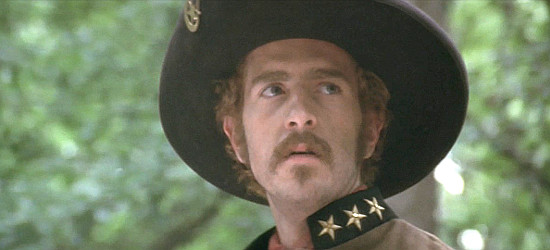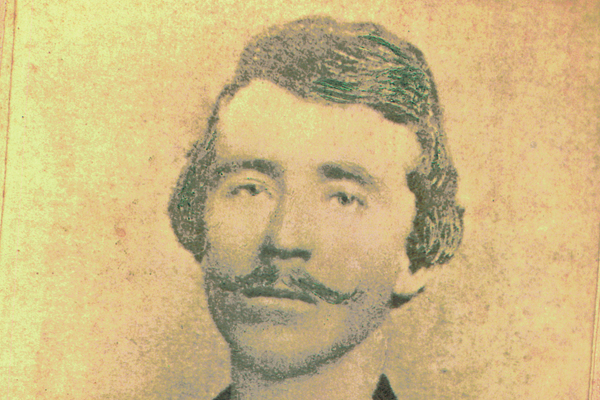William Clarke Quantrill was a Confederate guerrilla leader during the American Civil War. Having endured a tempestuous childhood before later becoming a schoolteacher, Quantrill joined a group of bandits who roamed the Missouri and Kansas countryside apprehending escaped slaves. Later on, this group joined the Confederate Army and were referred to as the “Quantrill’s Raiders.” Take a look below for 27 more strange and interesting facts about William Quantrill.
1. Quantrill’s Raiders was a pro-Confederate partisan ranger outfit best known for their often brutal guerrilla tactics, which made use of effective Native American field skills.
2. Quantrill’s group included the infamous young Jesse James and his older brother Frank James.
3. Quantrill is often noted as influential in the minds of many bandits, outlaws and hired guns of the Old West as it was being settled.
4. In May, 1865, Quantrill was mortally wounded by Union troops in Central Kentucky, in one of the last engagements of the Civil War.
5. Born in Dover Canal, Ohio, in 1837, Quantrill moved often during his early adulthood in search of adventure and, more importantly, money.

6. By 1859, his travels had brought him to Stanton, Kansas.
7. Quantrill had spent some time in this little town in Douglas County two years earlier and he returned to get a job teaching school and to settle down.
8. He soon changed professions from being a schoolteachers to the more lucrative and exciting career of horse-thief and slave trader.
9. Quantrill’s new career began with a scheme of stealing slaves and horses from Missouri and reselling them to the highest bidder, preferably not their previous owner.
10. In December, 1861, he organized his infamous guerrilla band, which included William “Bloody Bill” Anderson, George Todd, Fletcher Taylor, Cole Younger, and Frank James, to name a few.
11. They claimed to be fighting for the Confederacy, but in fact, their murdering and looting benefited only their pocketbooks.

12. Quantrill’s tactics were ruthless and unmerciful; the best example being the well-known raid on Lawrence in 1863. It was on August 31, when his band attacked this free-state stronghold and after a four-hour siege they destroyed the town.
13. Businesses and homes were looted and the town was burned, but the most heinous part of the raid was that the marauders rounded up the men and boys into the middle of the town.
14. As their wives and daughters watched, they were executed by the guerrillas.
15. This massacre had the distinction of being the worst perpetrated during the Civil War.
16. Toward the end of the war, Quantrill led his men first to Texas to prey on unprotected wagon trains headed West.
17. From Texas, they moved through Missouri to Kentucky. The plan was to surrender to Union forces in Kentucky disguised as a regular Confederate unit, and receive a pardon from the North.
18. In May of 1865, Quantrill’s plan was foiled when a Union unit, led by Captain Edward Terrill, intercepted his band.

19. While in Texas, Quantrill and his 400 man quarreled.
20. His once-large band broke up into several smaller guerrilla companies. One was led by his lieutenant, “Blood Bill” Anderson. Quantrill joined them briefly in the fall of 1864 during fighting north of the Missouri River.
21. In the spring of 1865, now leading only a few dozen pro-Confederates, Quantrill staged a series of raids in western Kentucky.
22. On May 10, when Quantrill and his band were caught in a Union ambush at Wakefield Farm, unable to escape on account of a skittish horse, he was shot in the back and paralyzed from the chest down.
23. He was brought by wagon to Louisville, Kentucky, and taken to the military prison hospital, located on the north side of Broadway at 10th Street.
24. He died from his wounds on June 6, 1865, at the age of 27.
25. Quantrill was buried in an unmarked grave, which is now marked, in what later became known as St. John’s Cemetery in Louisville.

26. A boyhood friend of Quantrill’s, newspaper reporter William W. Scott, claimed to have dug up the Louisville grave in 1887 and brought Quantrill’s remains back to Dover at the request of Quantrill’s mother. These remains were supposedly buried in Dover in 1889.
27. In the early 1990s, the Missouri division of the Sons of Confederate Veterans convinced the Kansas State Historical Society to negotiate with authorities in Dover, which led to three arm bones, two leg bones, and some hair, all allegedly Quantrill’s, being buried in 1992 at the Old Confederate Veteran’s Home Cemetery in Higginsville, Missouri. As a result of these events, there are grave markers for Quantrill in Louisville, Dover, and Higginsville.





One Comment
Woods Campbell
February 16, 2021 at 7:28 amThere are always two sides to every story.